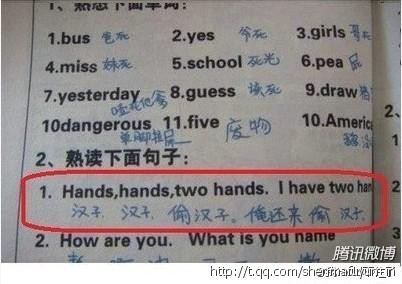Spelling with Chinese character(istic)s
Mark Swofford sent in this photograph of the entrance to the Batefulai Canting in Maolin, Taiwan, near the trail to the purple butterfly valley.
Read the rest of this entry »
Mark Swofford sent in this photograph of the entrance to the Batefulai Canting in Maolin, Taiwan, near the trail to the purple butterfly valley.
Read the rest of this entry »
From Jason Cox (with additions and modifications by VHM):
In Taiwan, one often comes across efforts at using zhùyīn 注音 ("phonetic annotation") to hint to readers that a Hoklo Taiwanese reading of the sentence is preferred, rather than a Mandarin reading. Sometimes the characters are "correct" Hoklo Taiwanese (they convey the meaning of the characters directly); sometimes they will simply sound like Hoklo Taiwanese when read in Mandarin. Two examples that come to mind:
Read the rest of this entry »
As a follow-up to my Language Log post on Li Yang's fēngkuáng liánxiǎng 疯狂联想 ("crazy association"), Chris Fraser sent me three images of an old Cantonese book that purports to teach English by means of what it calls "Táng zì zhù yīn" 唐字註音 ("phonetic annotation with Tang [i.e., Chinese] characters").
Read the rest of this entry »
Together with his "greetings from small-town Japan", Chris Pickel sent in this photograph of a sign, which was put up in his neighborhood for the aki-matsuri 秋祭り ("autumn festival").
Read the rest of this entry »
If you do a web search for "Hsigo", you will find thousands of references and hundreds of images. I won't give specific references, because they're all complete and utter nonsense, but you can read detailed descriptions of these fake, mythical Chinese monkeys — including pseudo-learned discussions of their name — in works like the following: Erudite Tales, Creepy Hollows Encyclopedia, Mythical Creatures Guide, Encyclo, Societas Magic, Monstropedia, etc., etc. Hsigo are supposedly flying monkeys with bird-like wings, the tail of a dog, and a human face.
There's even a very brief Wikipedia entry for Hsigo, but I know a top Wikipedia editor who is endeavoring to liquidate that totally fictitious article as a first-step toward eliminating "Hsigo" lore from the Web and hopefully from circulation elsewhere as well.
It all started with a typo. See "'Hsigo', the viral OCR typo". This detective article is really quite entertaining and edifying. It ends with a reference to what our Language Log colleague, Geoffrey Nunberg, calls "the 'metadata train wreck' of Google Books".
Read the rest of this entry »
Students of Japanese often get confused about when to use "Nihon" and when to use "Nippon" as the name of the country. In truth, there are many names for the "Land of the Rising Sun (a translation of Nihon / Nippon にほん / にっぽん / 日本), and sometimes the English name "Japan" gets thrown into the mix. All of these variants came together in an incident that is recounted for us by Jim Breen.
Read the rest of this entry »
Here's part of a page from a Chinese exercise book for learning English, with a student's notations added in blue ink:

Read the rest of this entry »
I missed this article in the Chinese edition of China Daily when it first appeared on June 20, 2012, but it raises an issue that is sufficiently important to warrant addressing now that William Steed has kindly called my attention to it:
"Qián Jīnfán: 84 suì hòu kuà xìngbié 'rénshēng de cànlàn qī cáigāng kāishǐ'” 钱今凡:84岁后跨性别 “人生的灿烂期才刚开始” ("Qian Jinfan: 'the most glorious period of a person's life only begins' after age 84 when one transcends gender")
Read the rest of this entry »
Chinese speakers have phonetically transcribed the word "geek" as jíkè 极客, qíkè 奇客, etc., and these transcriptions are fairly widely used and recognized, even among Mandarin speakers (the initials would be velars in many non-Mandarin topolects, so they would sound more like "geek" than do the Mandarin pronunciations). So far, I don't know of any Chinese character transcription for "nerd", certainly none that is broadly circulating.
Read the rest of this entry »
Randy Alexander sent me the following photograph and asked how long it would take for me to identify the text in the background:

Read the rest of this entry »
My brother-in-law, Dan Heitkamp, bought the following object at an estate sale in Seattle:
Read the rest of this entry »